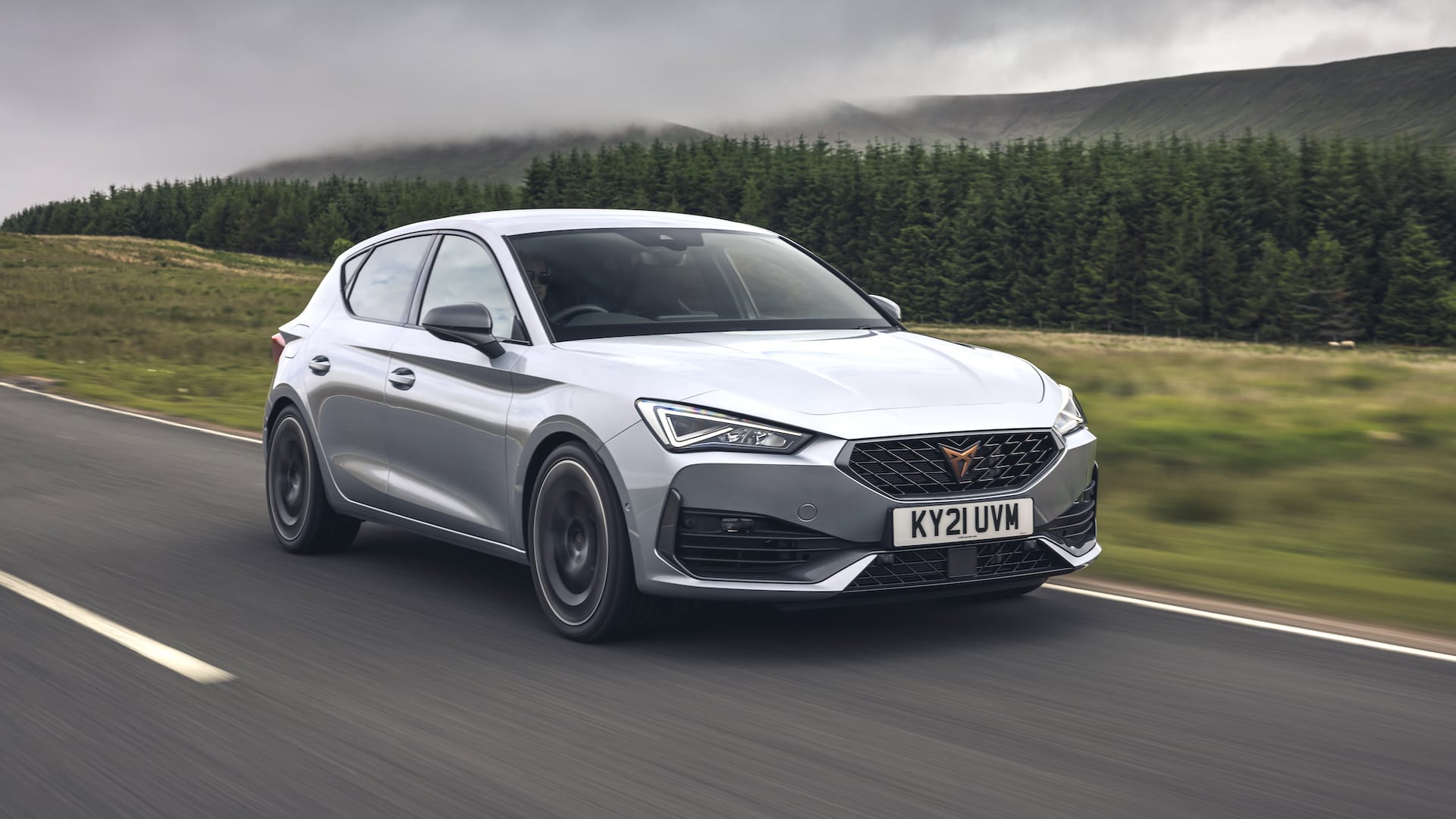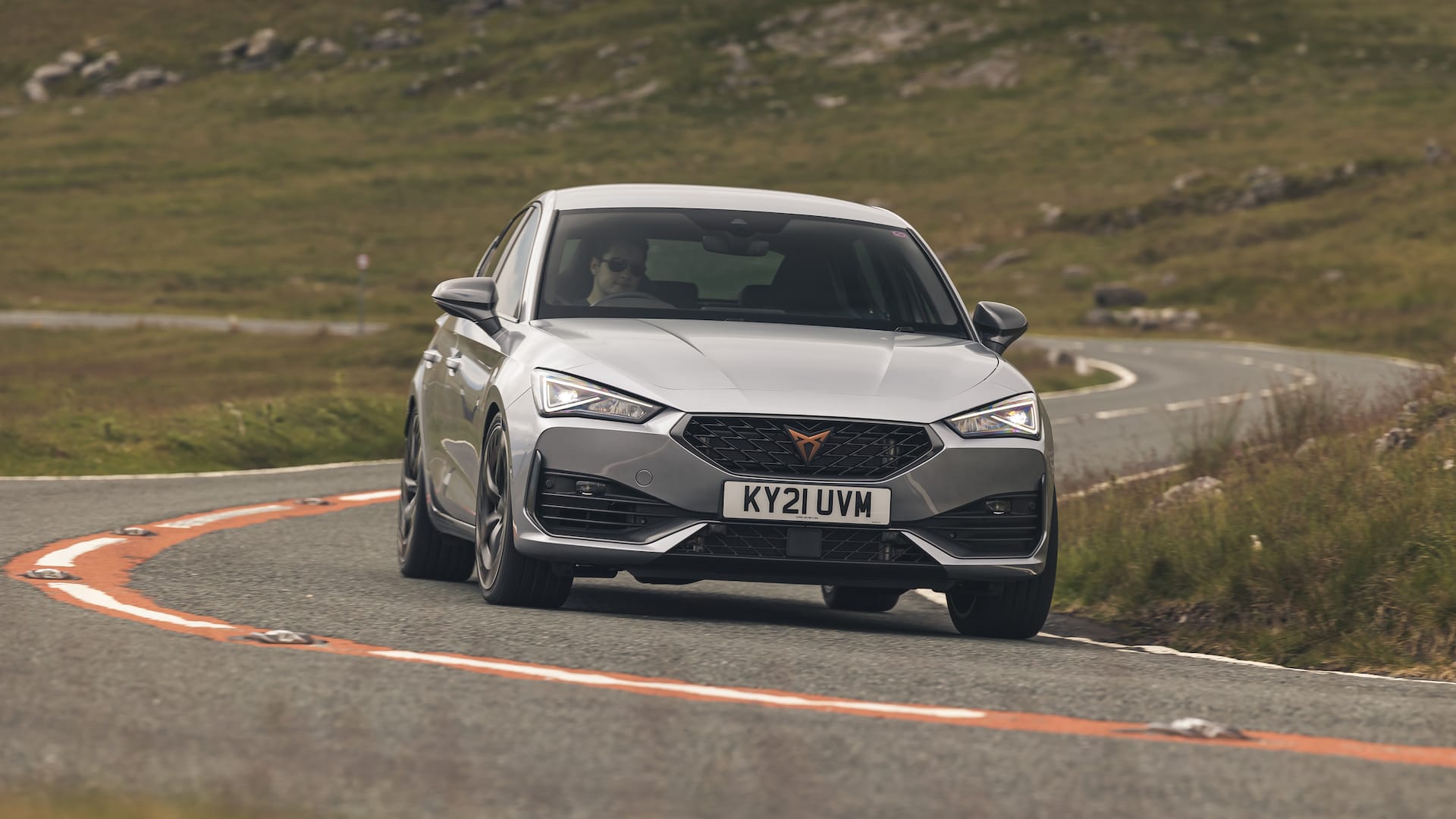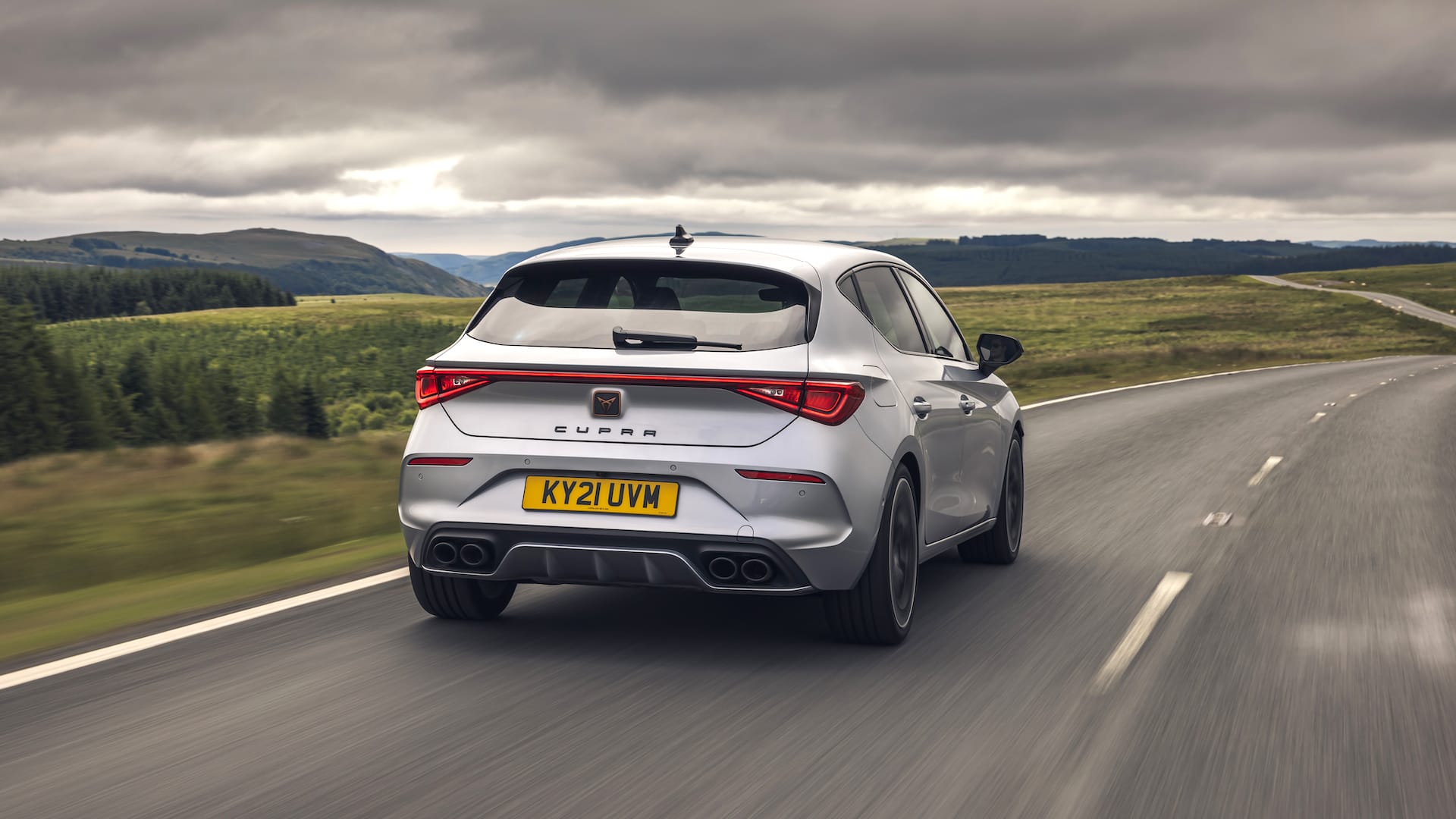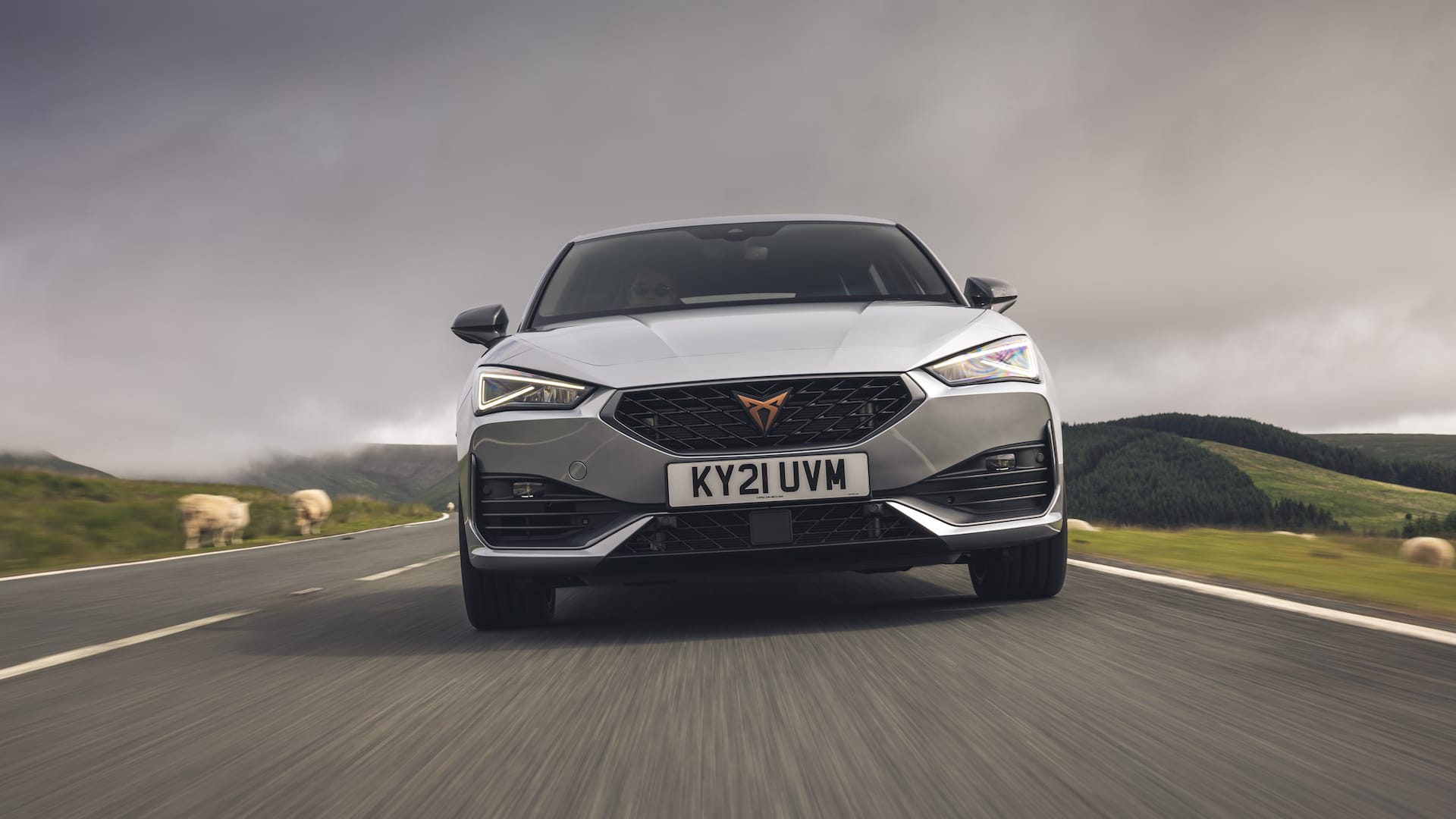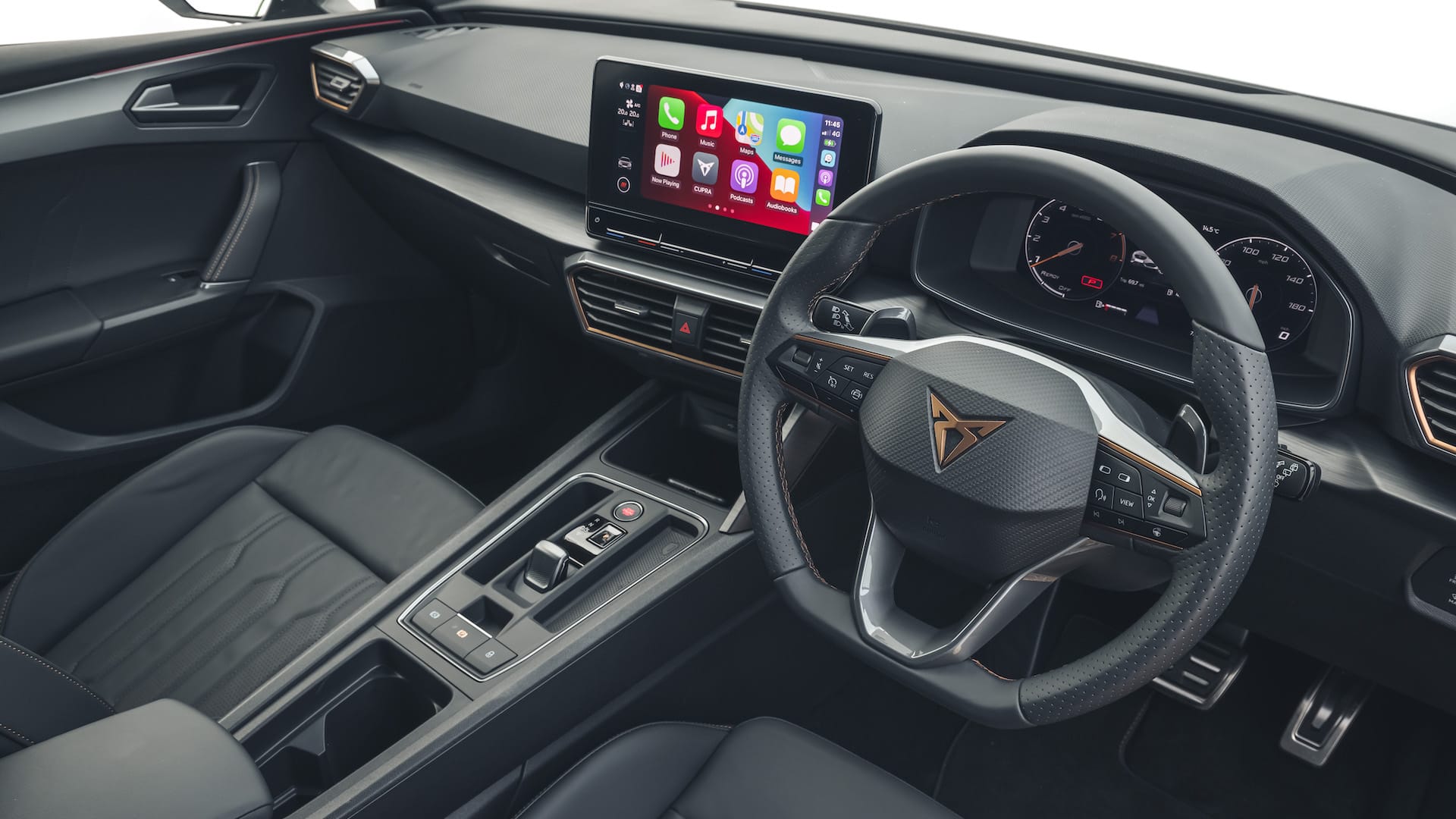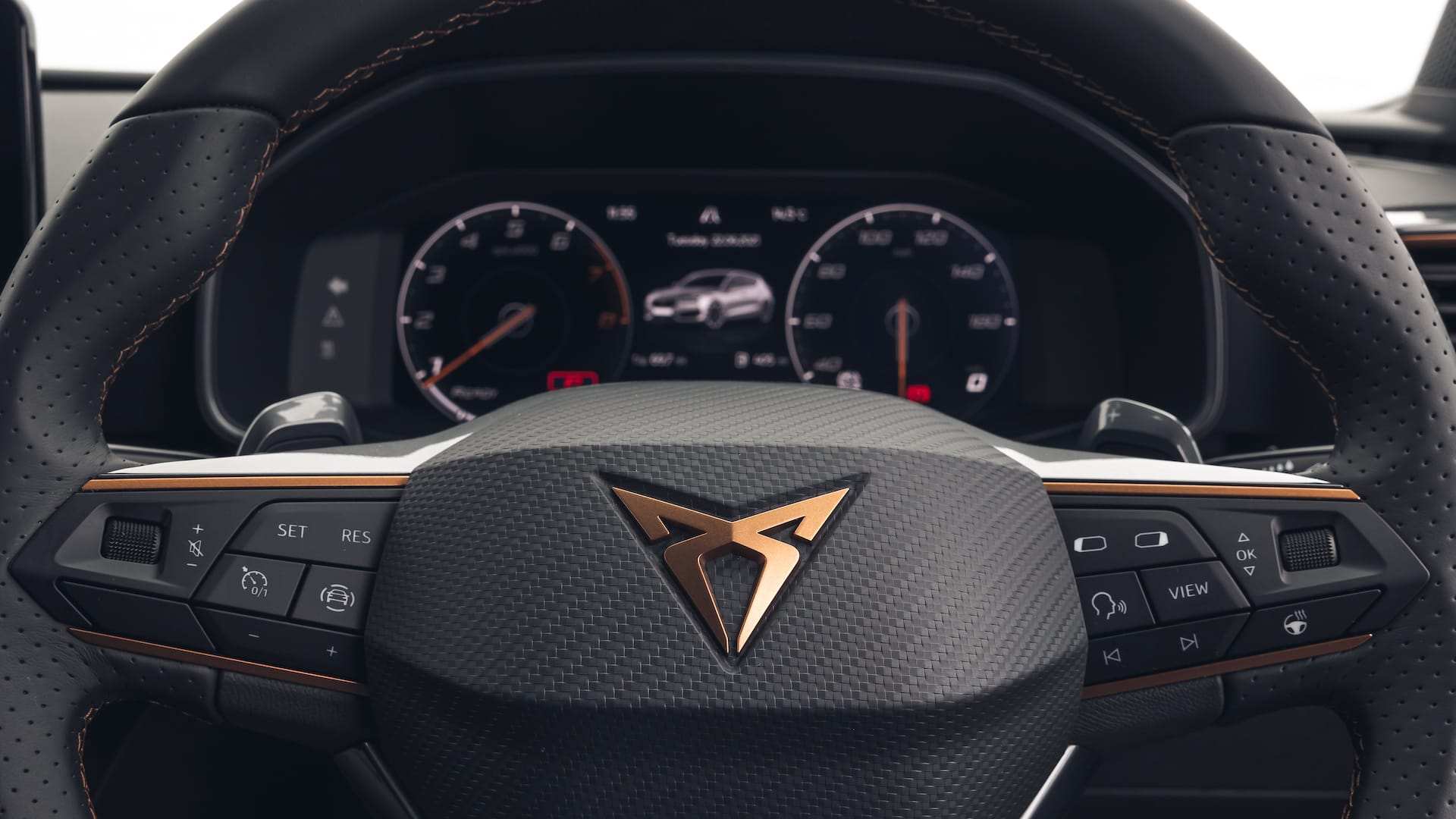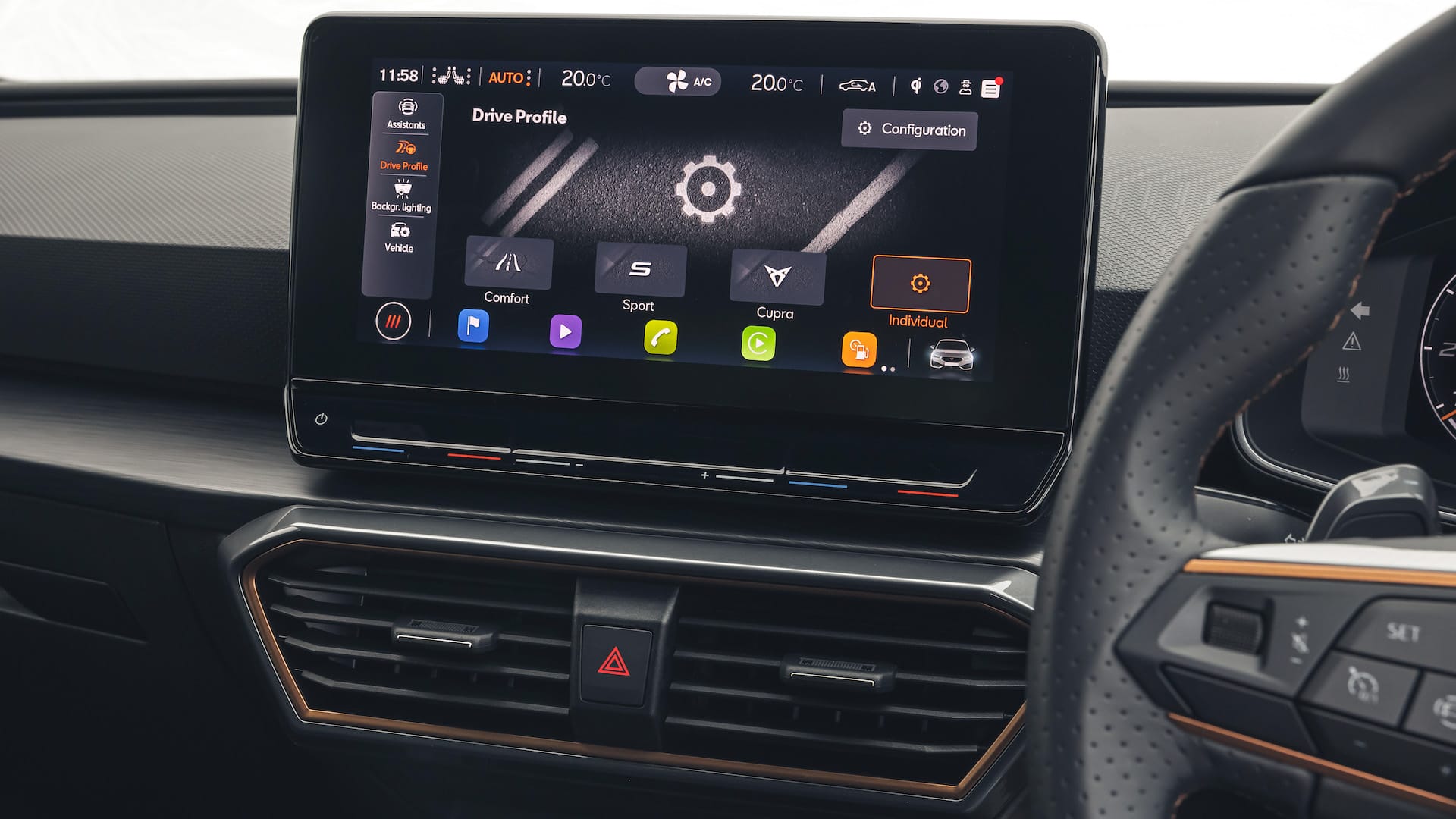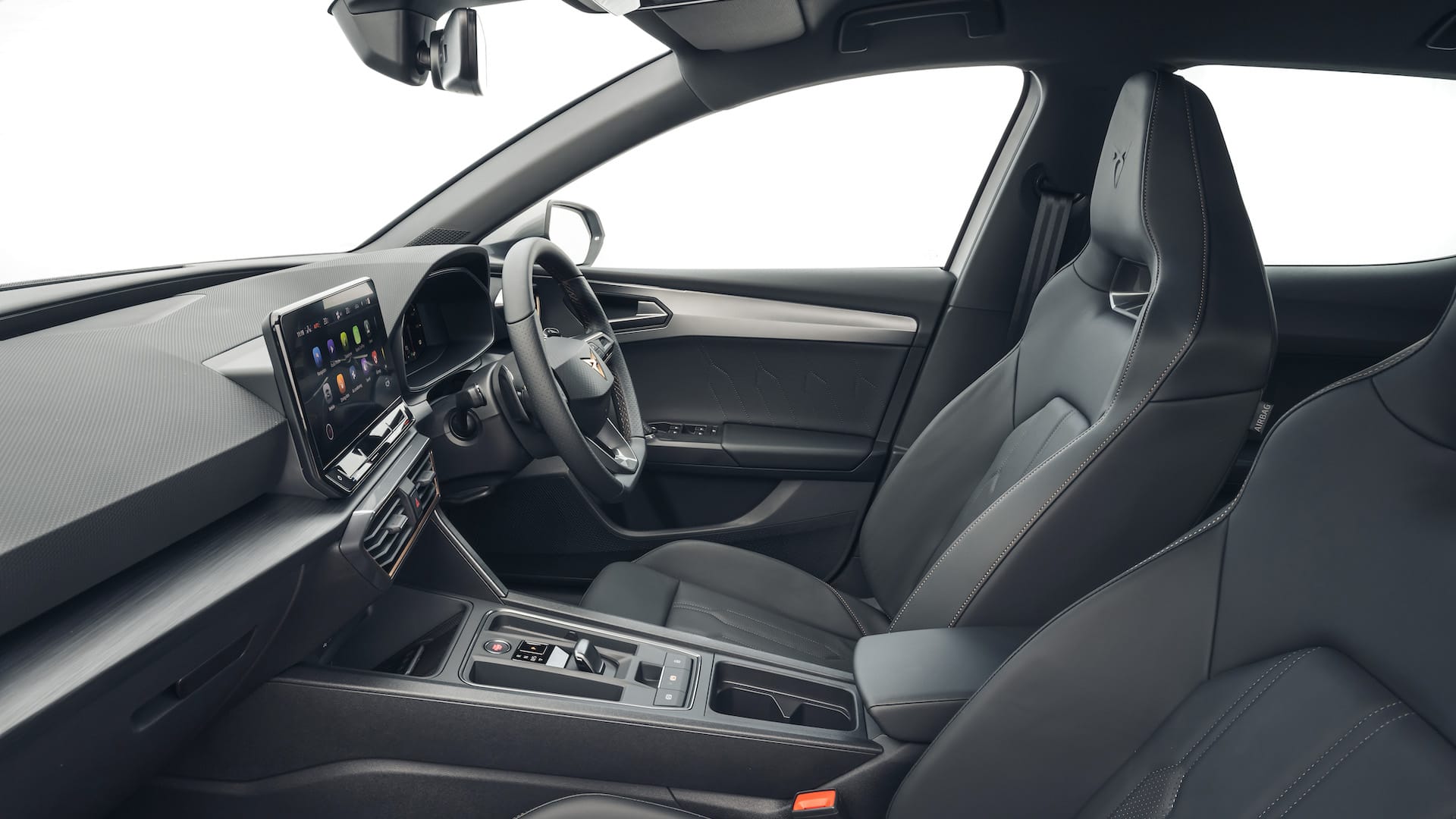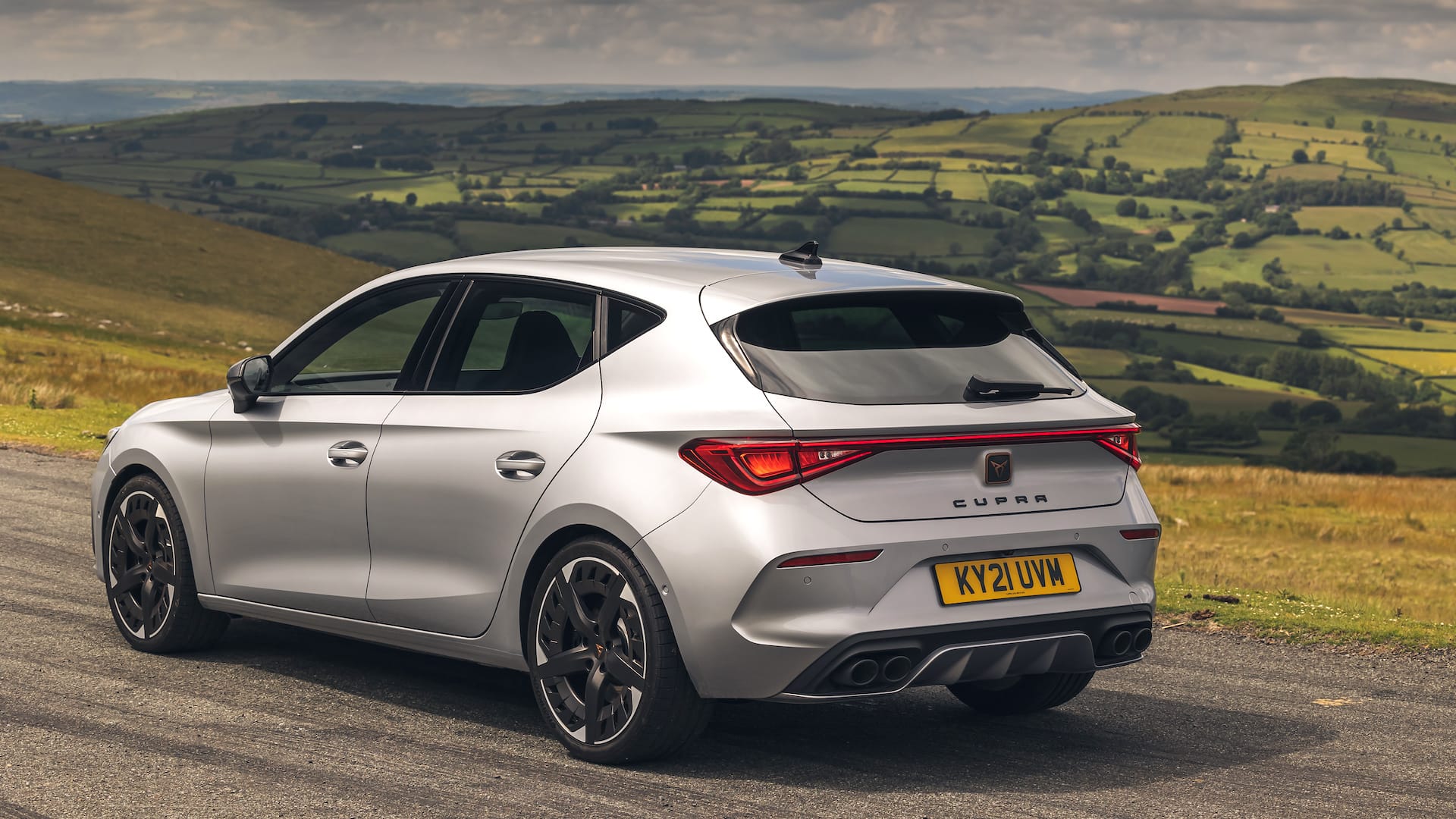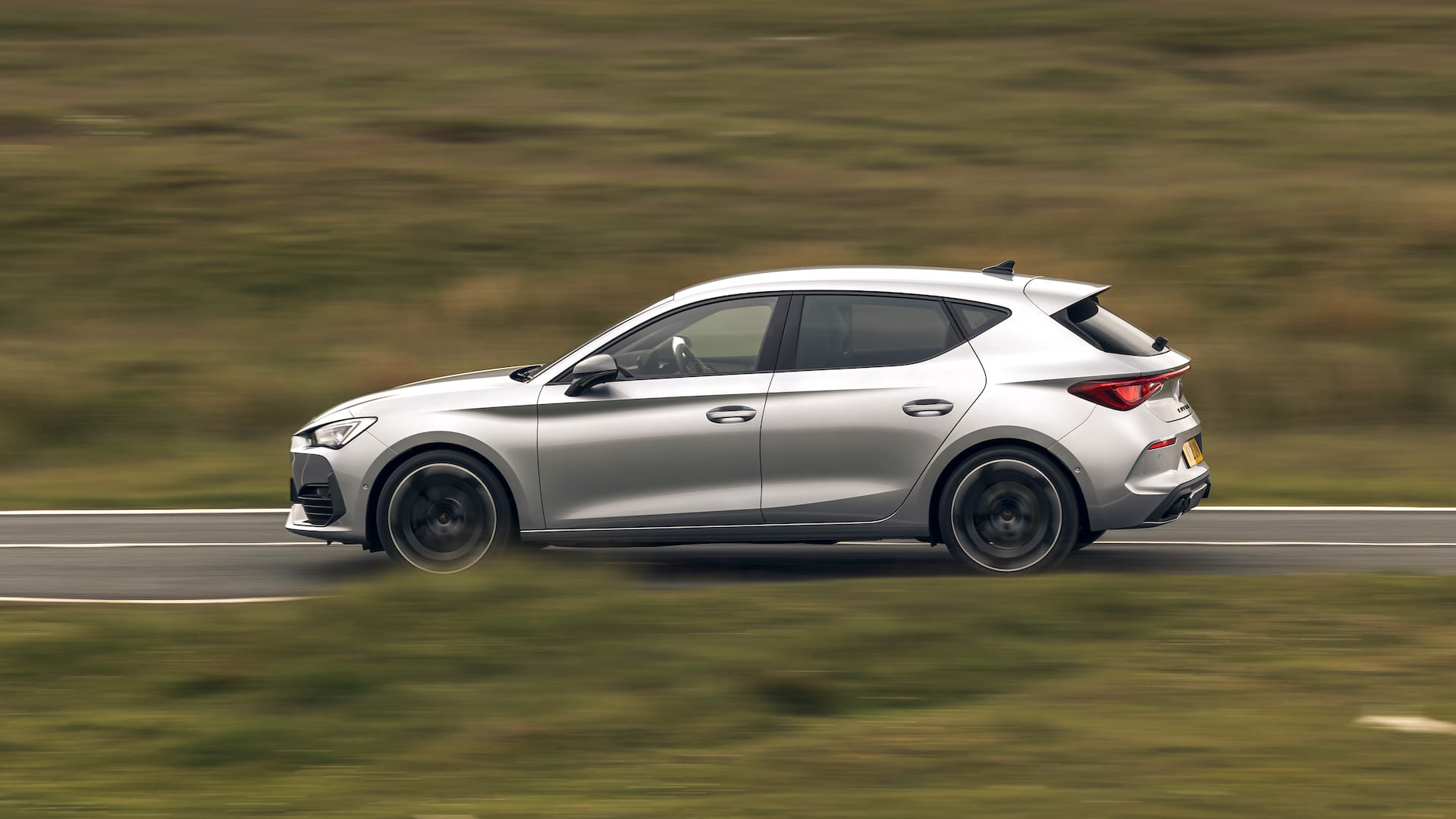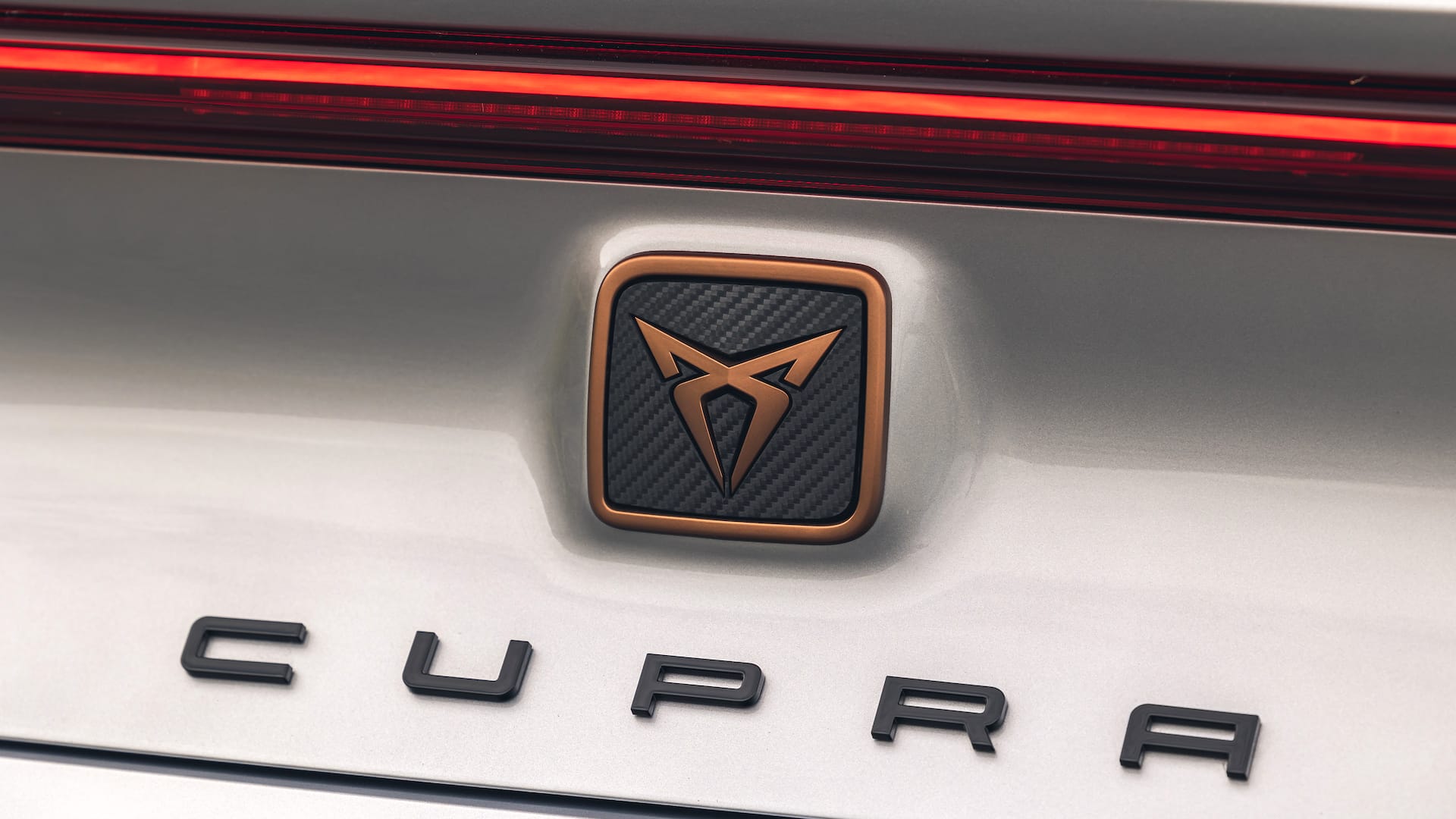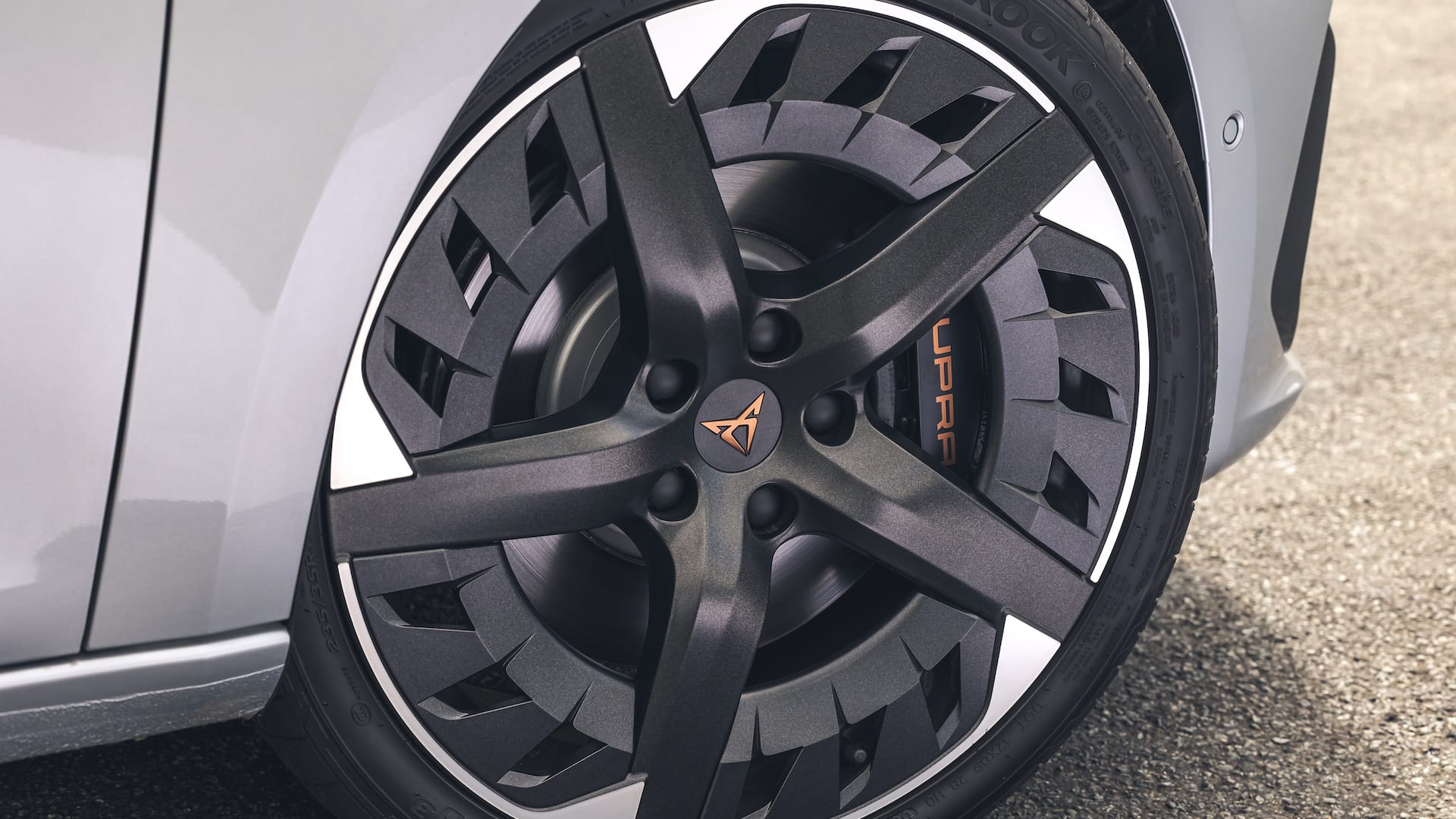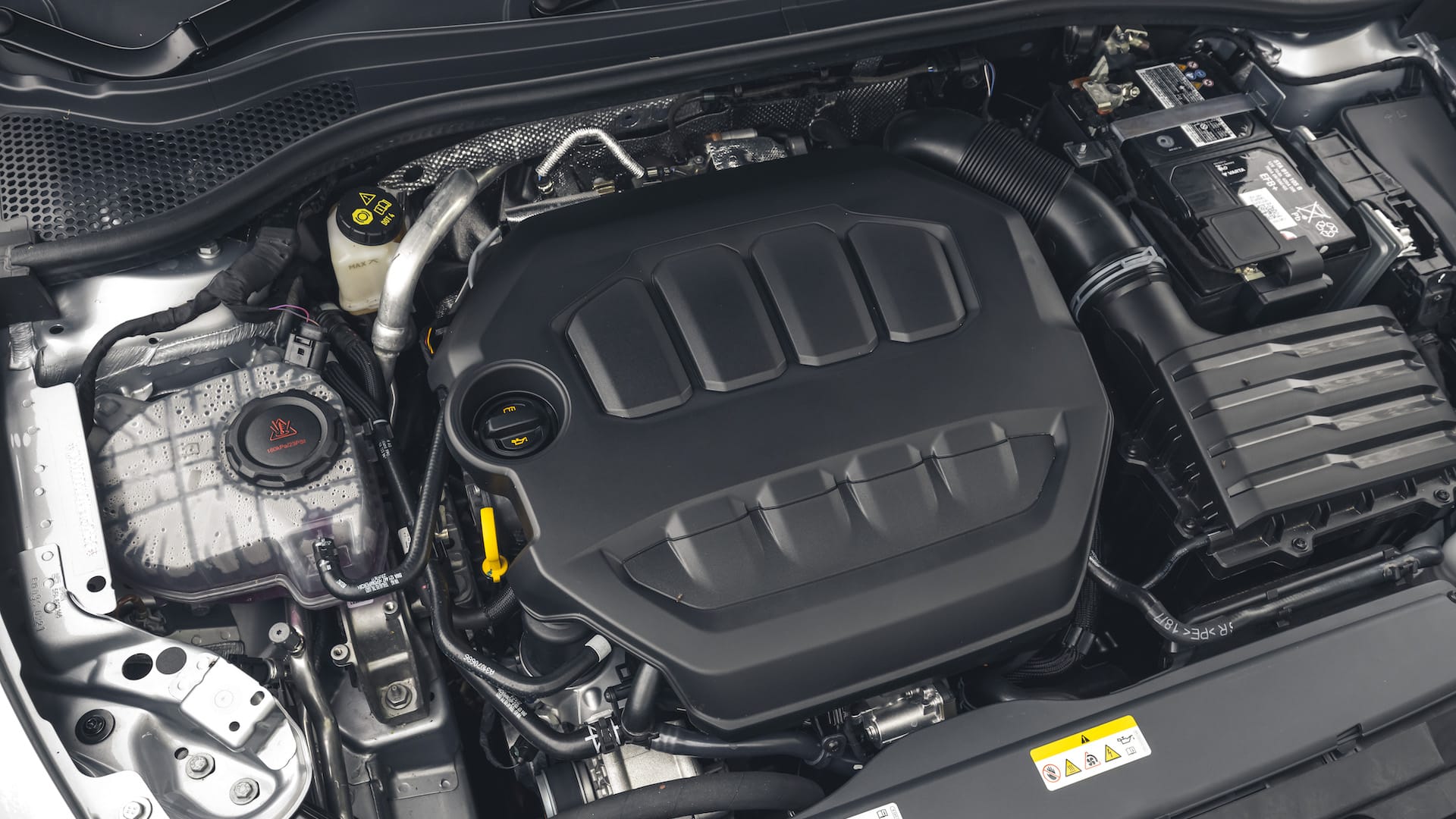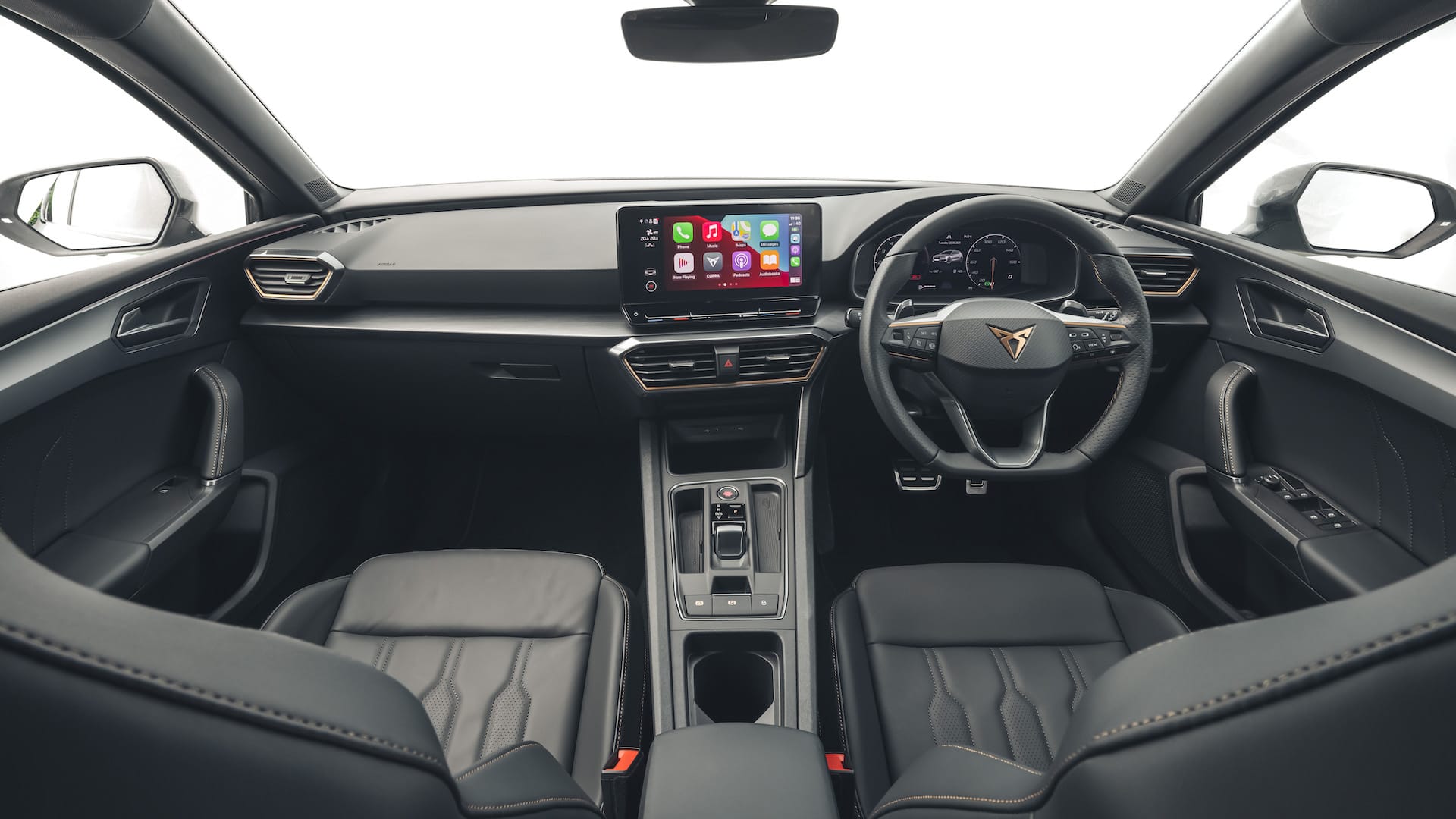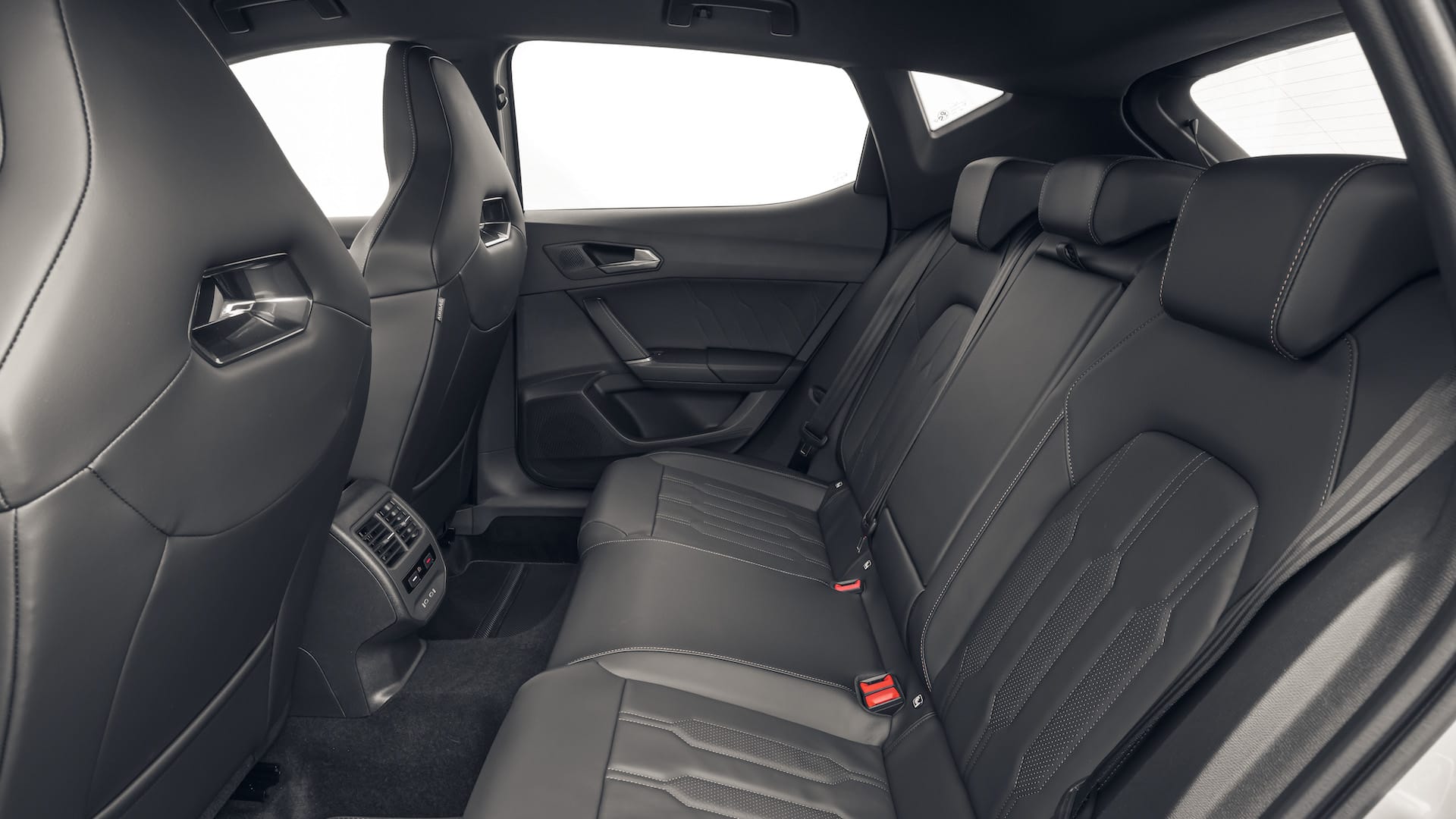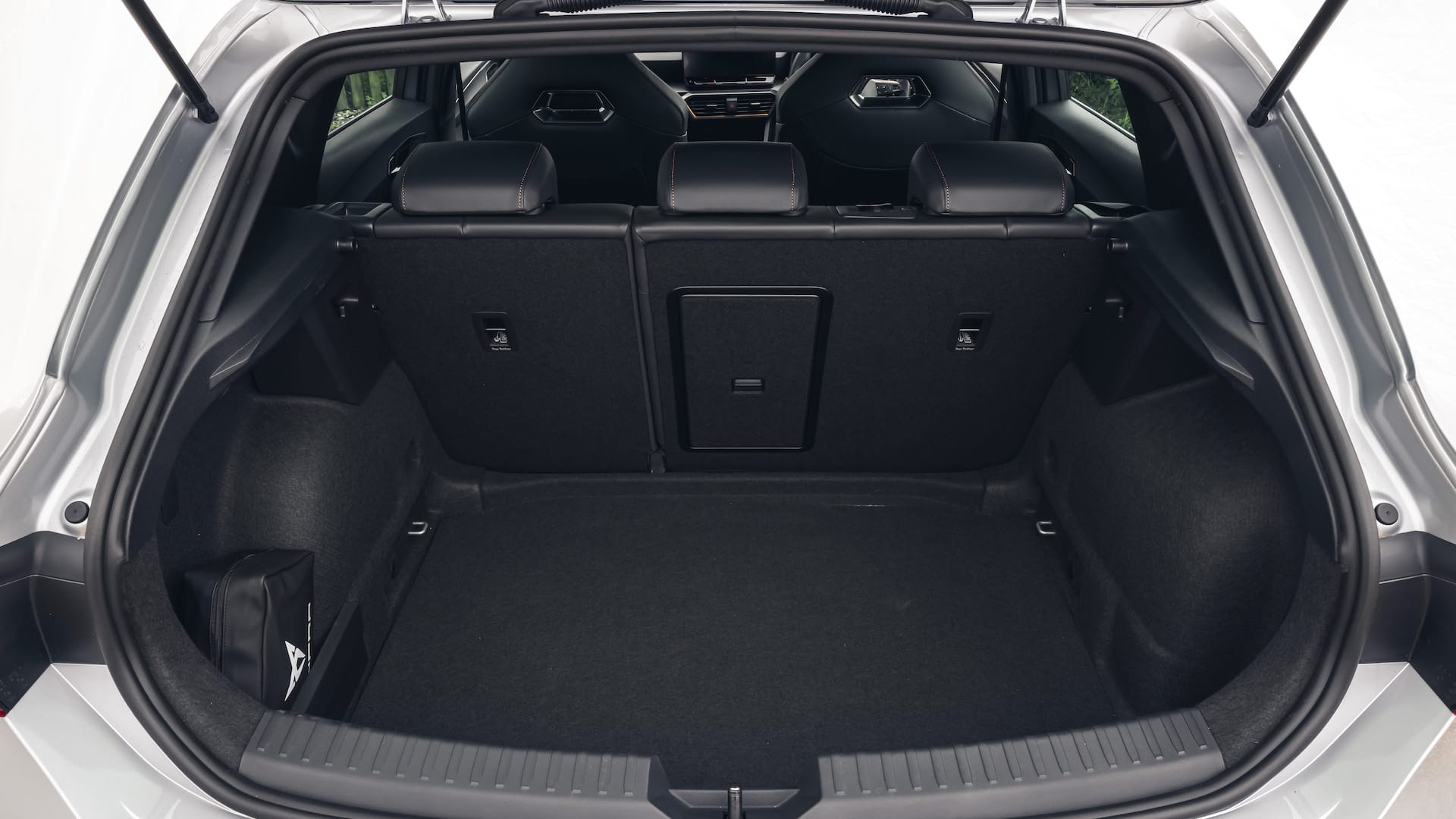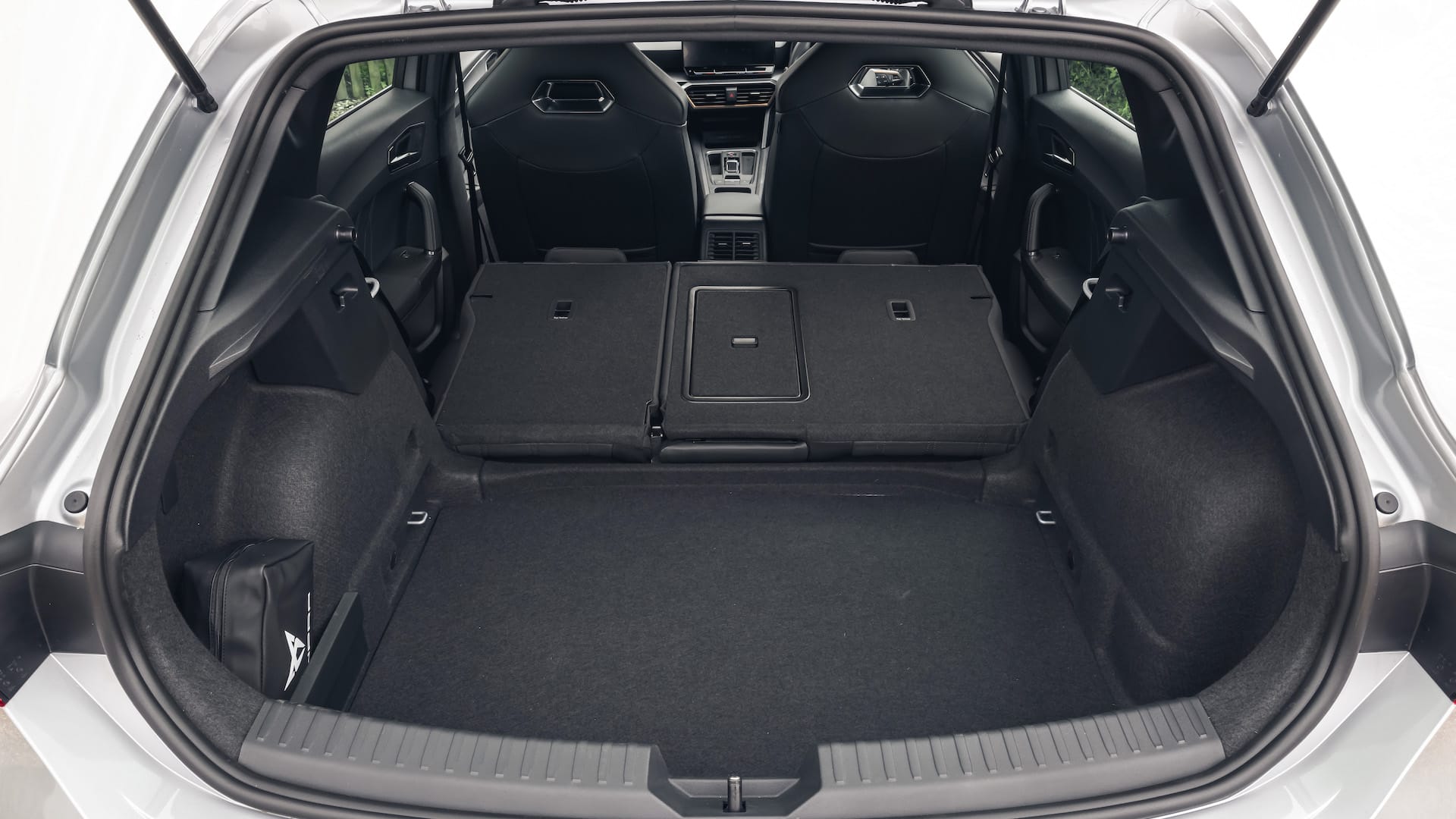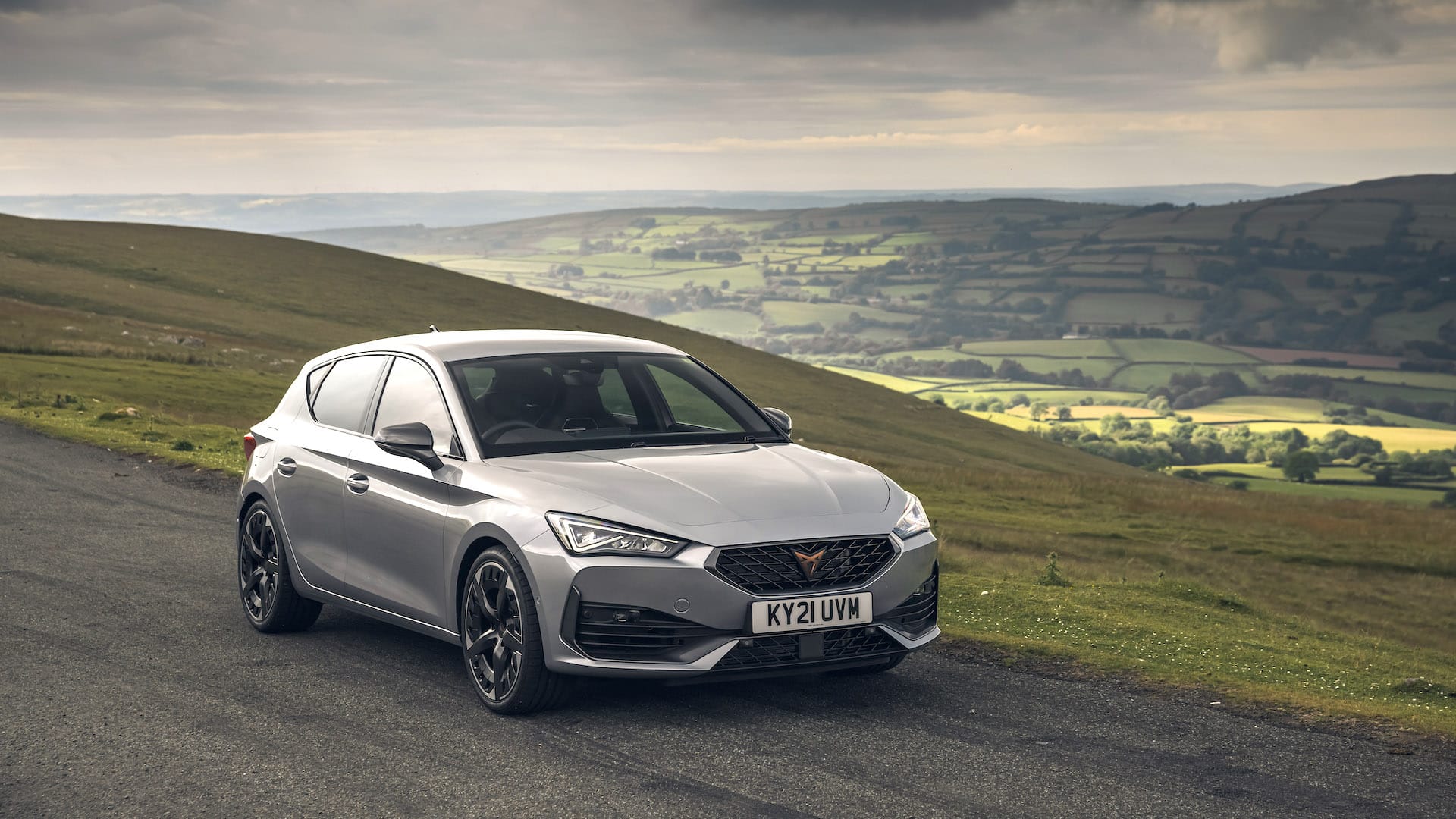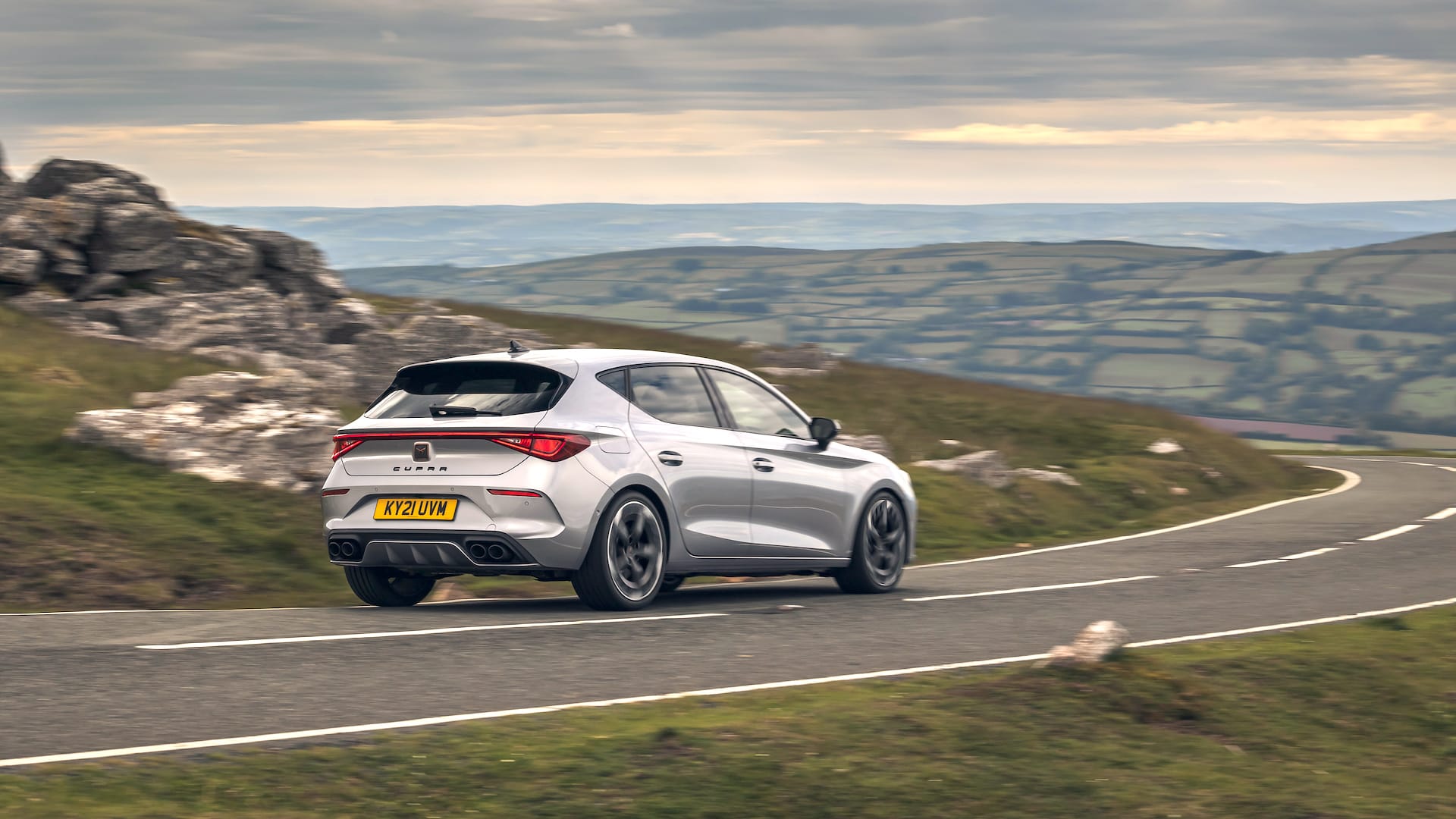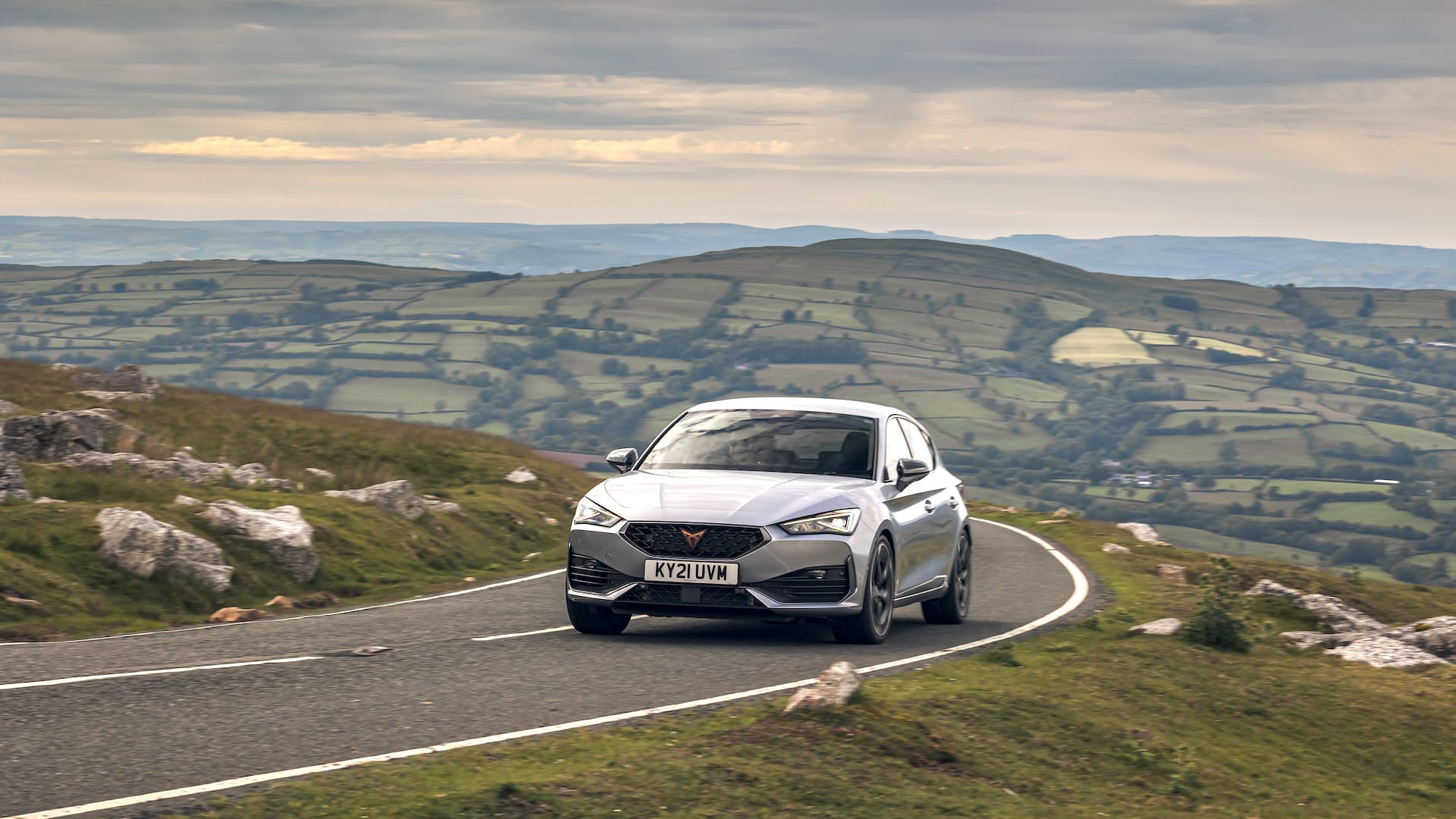It has been almost five years since Seat spun off the Cupra name to become a sub-brand in its own right. The Cupra Leon is the first standalone hot hatchback from this sporty offshoot, so it should be the best expression of what the ‘unconventional challenger brand’ (Seat’s words, not ours) is all about.
On the outside, the Cupra appears very much like the regular Seat Leon it’s based upon. Aside from copper detailing and four fat exhaust tailpipes, it looks subtle compared to some hot hatches. The tribal tattoo-inspired badges might still need explaining to the average person on the street, though.
Previously, the Cupra name would have adorned the fastest Leon of all, but now there is an entire range of models, including a plug-in hybrid. The Cupra Leon 300 hatchback we have here, however, is a thinly disguised version of the Volkswagen Golf GTI Clubsport.
Slows down fast
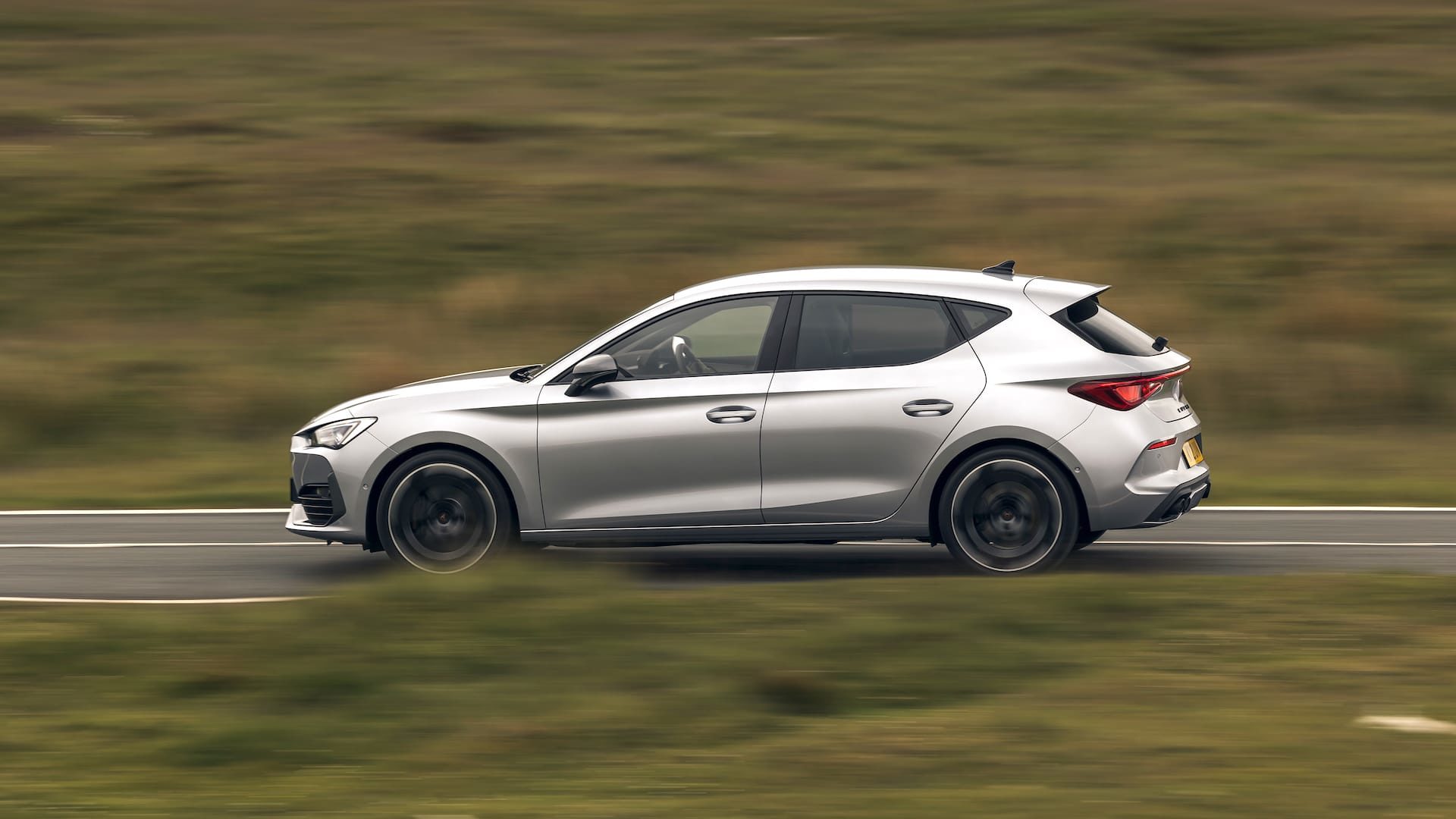
That means the same 2.0-litre turbocharged engine with 300hp and 295lb ft of torque, plus a seven-speed DSG semi-automatic transmission sending power to the front wheels. There is no manual gearbox option.
No question, the Cupra Leon 300 is ferociously fast. Sprinting from 0-62mph takes just 5.7 seconds, while top speed is limited to 155mph. Helping to control such weapons-grade power is an electronic limited-slip differential, which does an admirable job. Gear shifts are rapid, although the kickdown effect under full acceleration can feel needlessly vicious.
Large Brembo brakes are standard on the Cupra Leon 300, although they are hidden behind 19-inch aero-design alloy wheels. They slow the Cupra without hesitation, and provide plenty of immediate bite.
Engage Sport mode
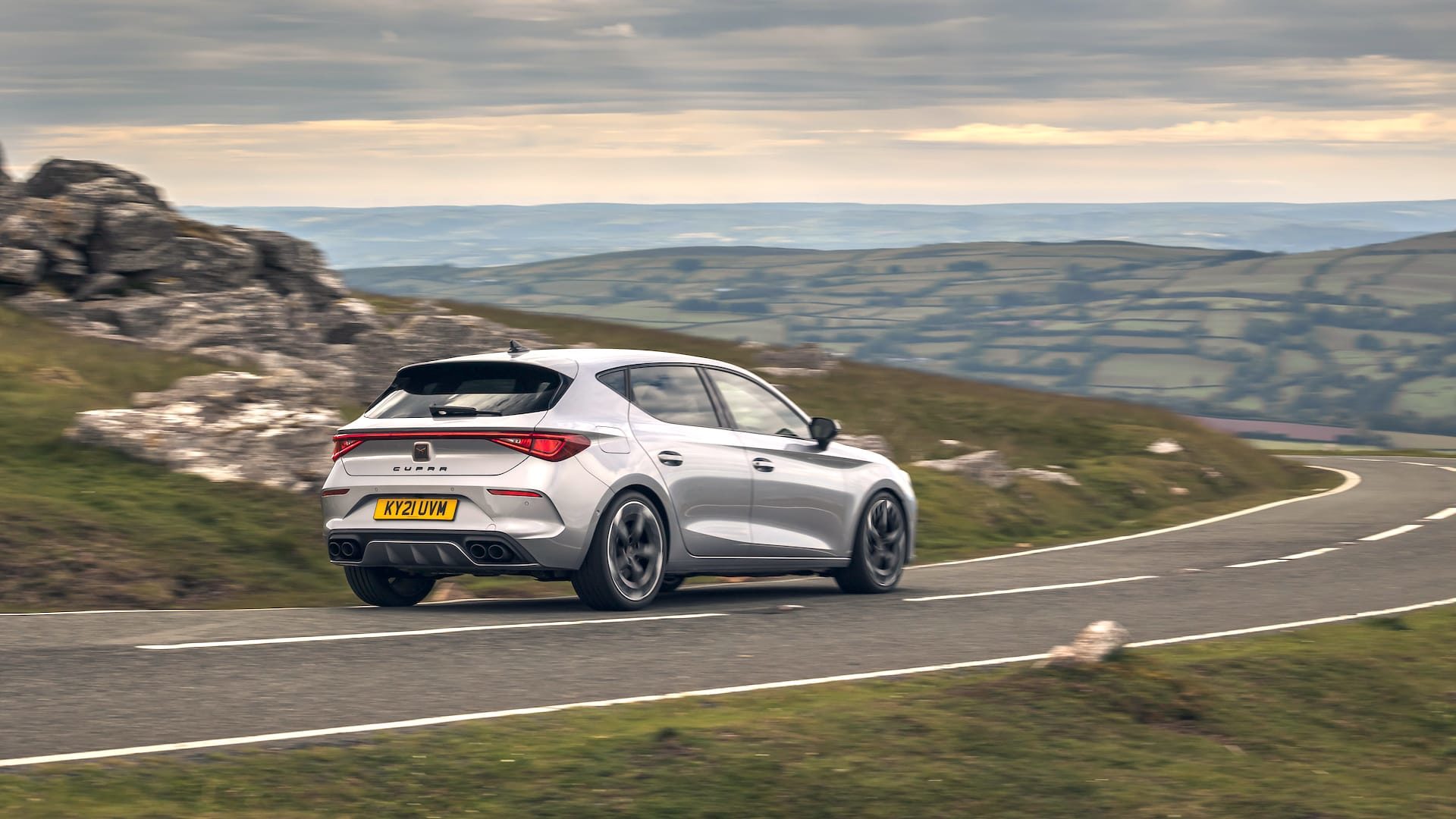
The speed-sensitive steering also has lots of initial sharpness, making for instant turn-in when cornering. It always feels a touch light, regardless of which of the four drive modes is selected; even the full-fat Cupra setting does not add bicep-curling weight to the rack. There is enough feedback to judge the level of grip at front tyres, though.
The Leon’s Dynamic Chassis Control offers 16 different settings for suspension firmness. This is, frankly, more than necessary, but there is a noticeable difference in ride quality between Comfort and Cupra modes. The Sport setting is perhaps the ‘Goldilocks’ option, being compliant enough for broken tarmac while still retaining firm body control.
Using Cupra mode pushes everything to the max, and results in lots of exhaust noise, including pre-programmed pops and crackles. Childish? Yes, but it will certainly put a smile on your face. If not your neighbours’ faces.
A touch too much
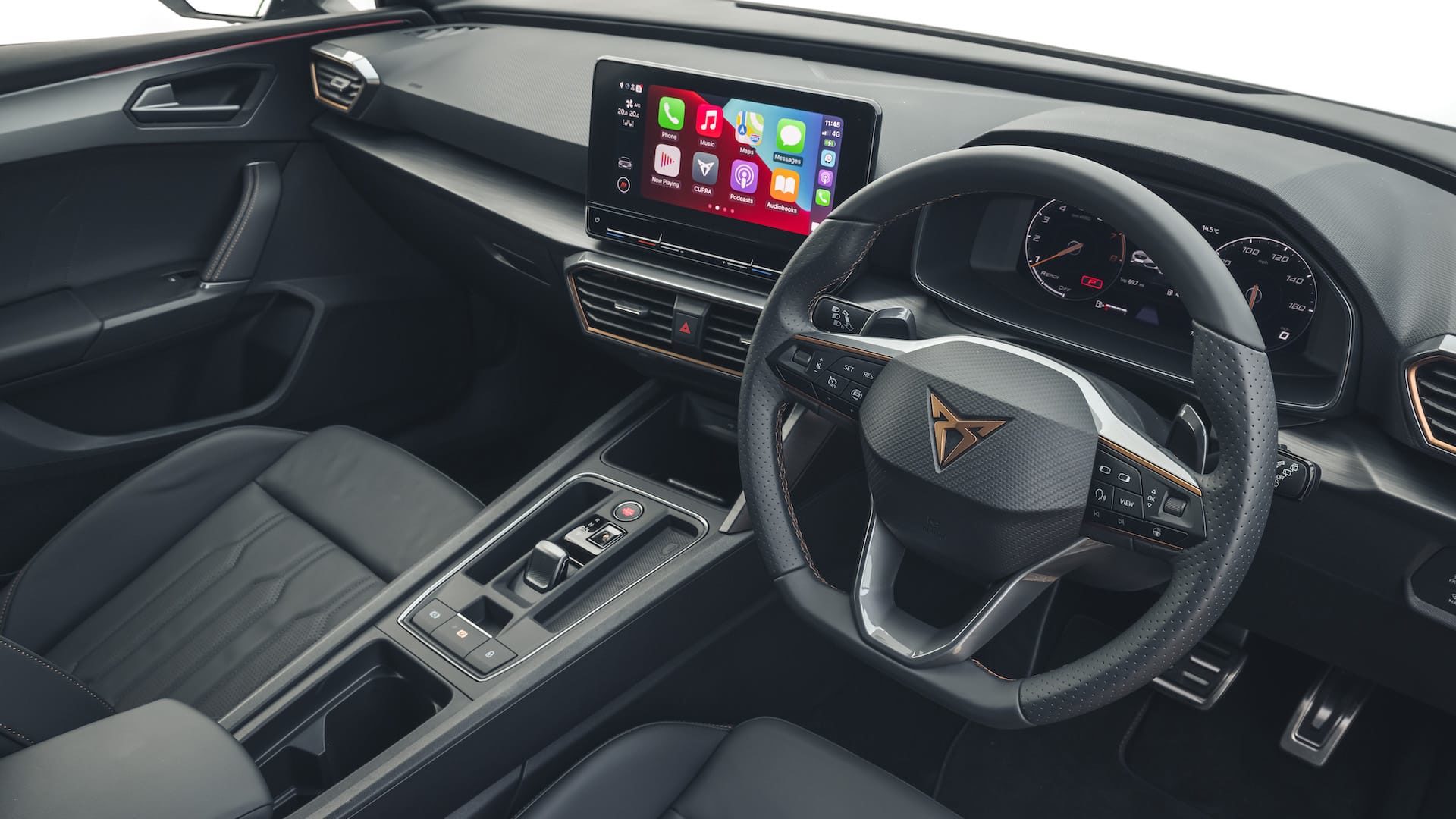
Like other modern Volkswagen Group cars, the Cupra Leon suffers with an infuriating infotainment touchscreen. It matters here, because changing drive modes requires a trip into various sub-menus.
This can spoil the moment when you want to engage Cupra mode, and is more frustrating when you know left-hand-drive versions come with a steering wheel-mounted button.
The rest of the cabin is less compromised, with copper highlights and high-backed sports seats to lift the standard Seat interior. Rear legroom is generous, thanks to the Leon’s long wheelbase, and boot space is a practical 380 litres. There is a Cupra Leon Estate for those who need even more room, too.
A strong challenge
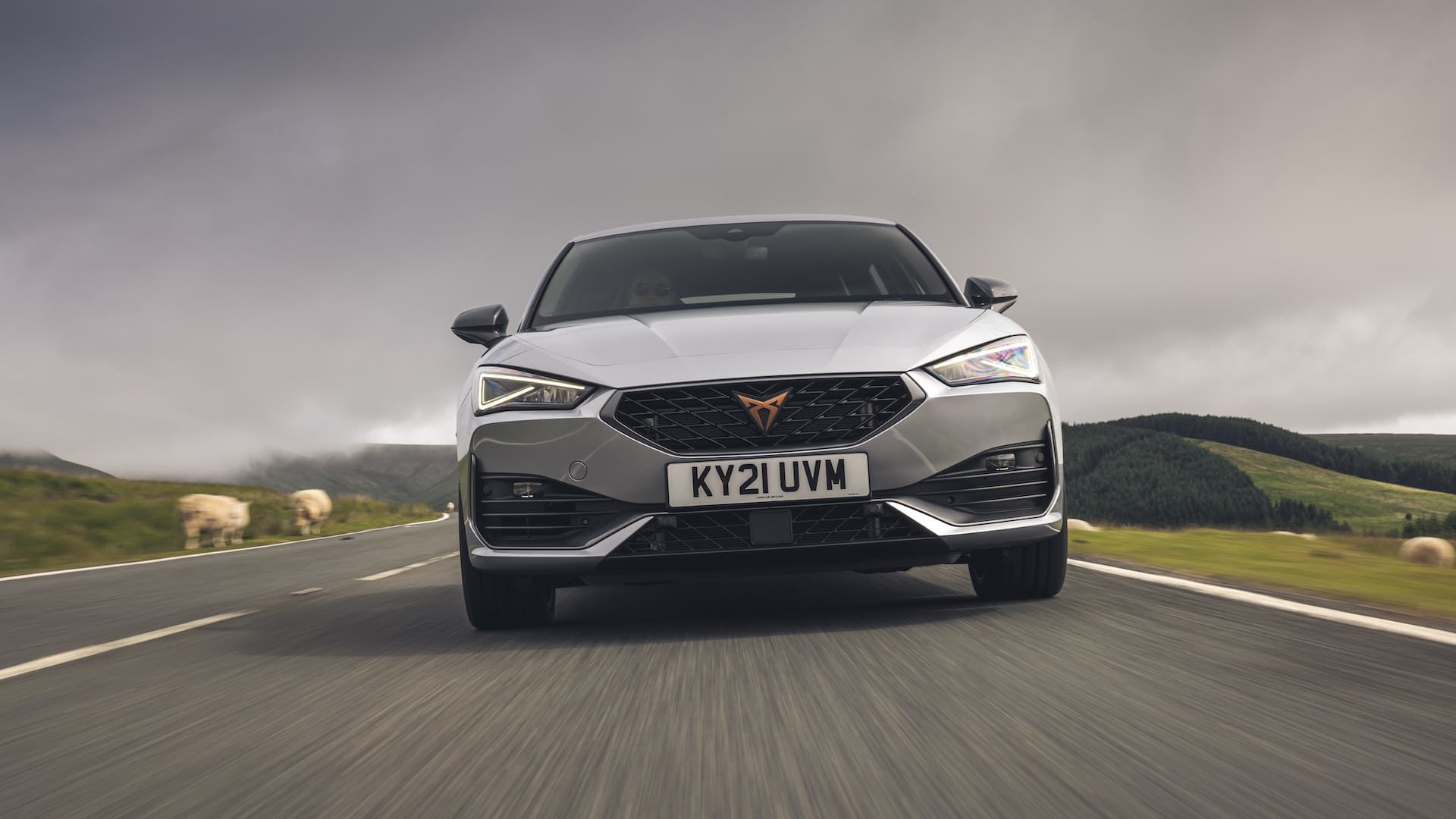
In top-spec VZ3 trim, the Cupra Leon 300 actually costs more than the Volkswagen Golf GTI Clubsport. You can opt for the lower-spec VZ2 version, but must manage without leather seats, aero wheels or wireless smartphone charging.
For all Cupra’s intent to be an unconventional challenger brand, the Leon 300 actually feels like a pretty sensible hot hatchback. Being both quick and practical, it can be fun on a racetrack and useful on the school run. Perhaps avoid the exhaust being in Cupra mode for the latter, though…
ALSO READ:
Volkswagen Golf R 20 Years review
Hot Seat: how Cupra became a car brand
